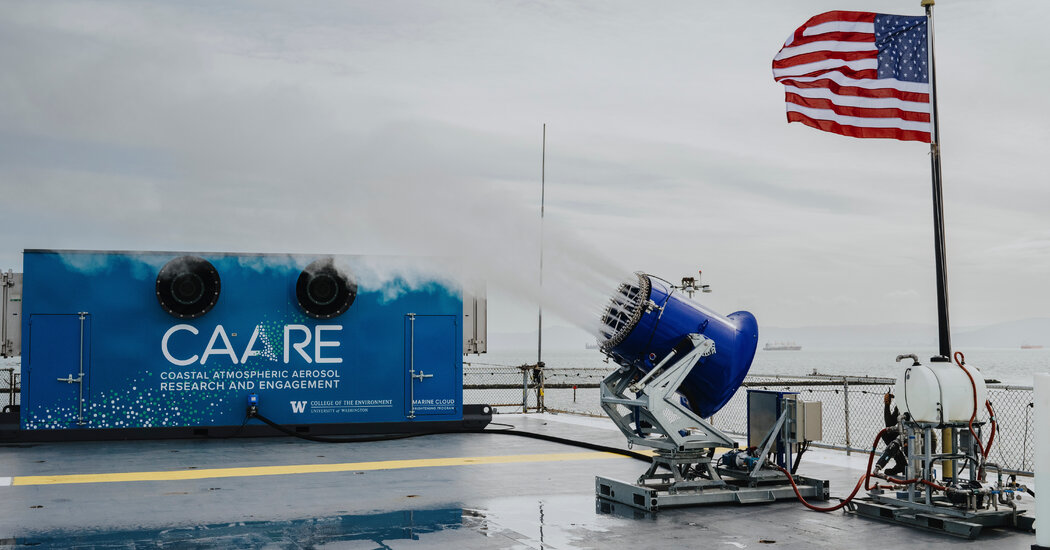The City Council in Alameda, Calif., voted to stop tests of a device that could one day cool the Earth. Scientists and city staff had previously concluded the tests posed no risk.
Elected leaders in Alameda, Calif., voted early on Wednesday to stop scientists from testing a device that might one day be used to artificially cool the planet, overruling city staff members who had found the experiment posed no danger.
Despite assurances from experts that the experiment was safe for humans and the environment, residents in the small city of 76,000 voiced the kinds of fears that swirl around the idea of intervening with natural systems to temporarily ease global warming.
The test involved spraying tiny sea-salt particles across the flight deck of a decommissioned aircraft carrier, the U.S.S. Hornet, docked in Alameda in San Francisco Bay. Versions of that device could eventually be used to spray the material skyward, making clouds brighter so that they reflect more sunlight away from Earth. Scientists say that could help to cool the planet and to fight the effects of global warming.
As humans continue to burn fossil fuels and pump increasing amounts of carbon dioxide into the atmosphere, the goal of holding global warming to a relatively safe level, 1.5 degrees Celsius compared with preindustrial times, is slipping away. That has pushed the idea of deliberately intervening in climate systems closer to reality.
Universities, foundations, private investors and the federal government have started to fund a variety of efforts, from sucking carbon dioxide out of the atmosphere to adding iron to the ocean in an effort to store carbon dioxide on the sea floor.
The experiment in Alameda did not involve brightening clouds; it was only testing the way sea-salt particles emitted through a spraying device behave under different atmospheric conditions. It took researchers years to design and build the spraying device and the experiment was expected to last for months or even years at a cost of about $1 million a year.
